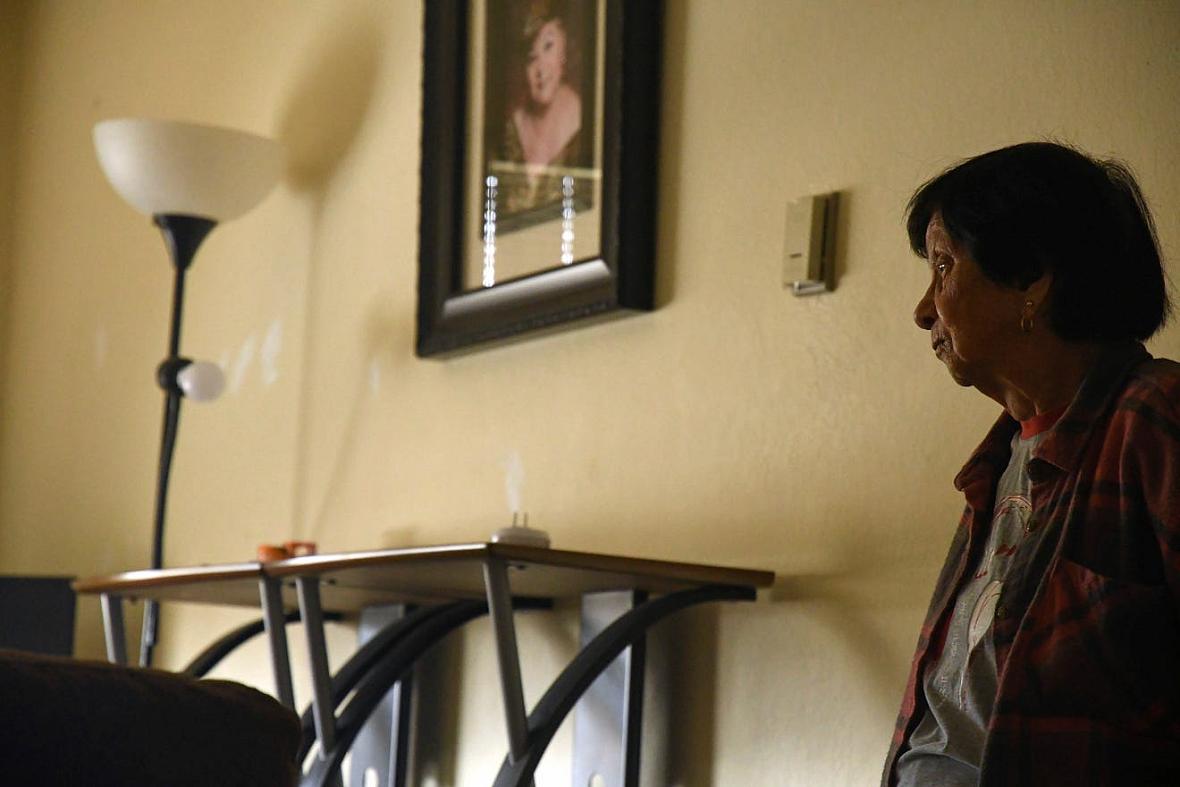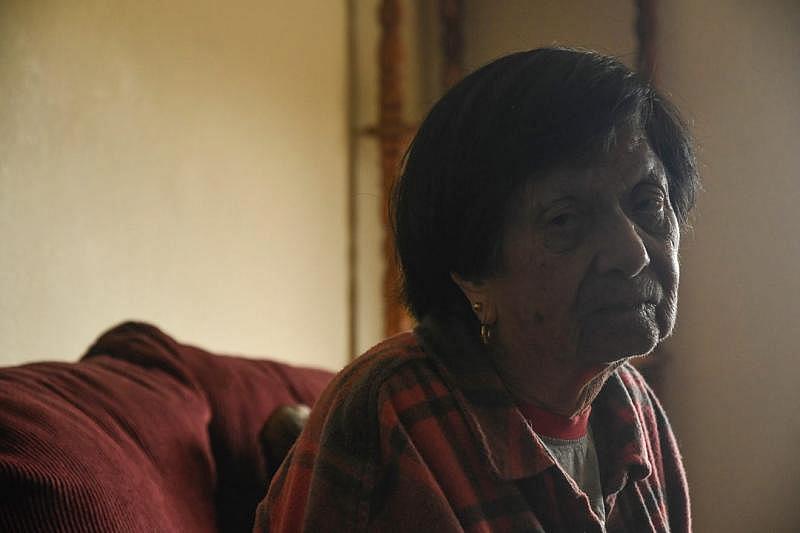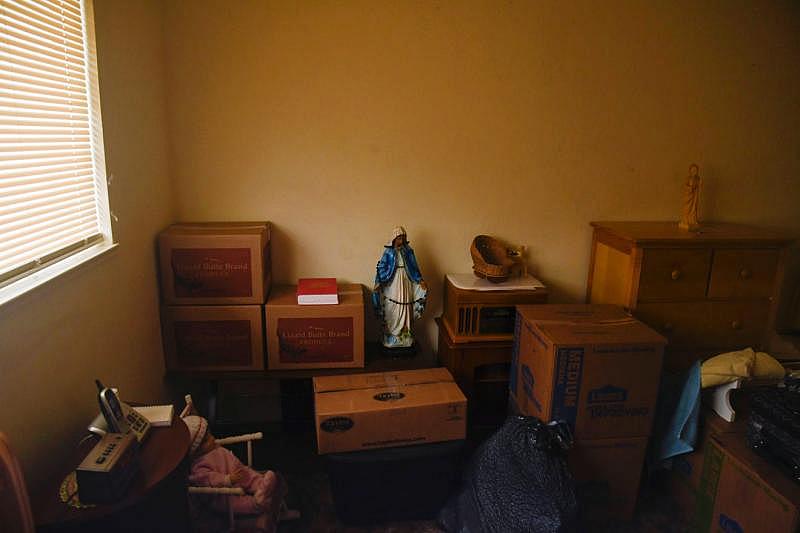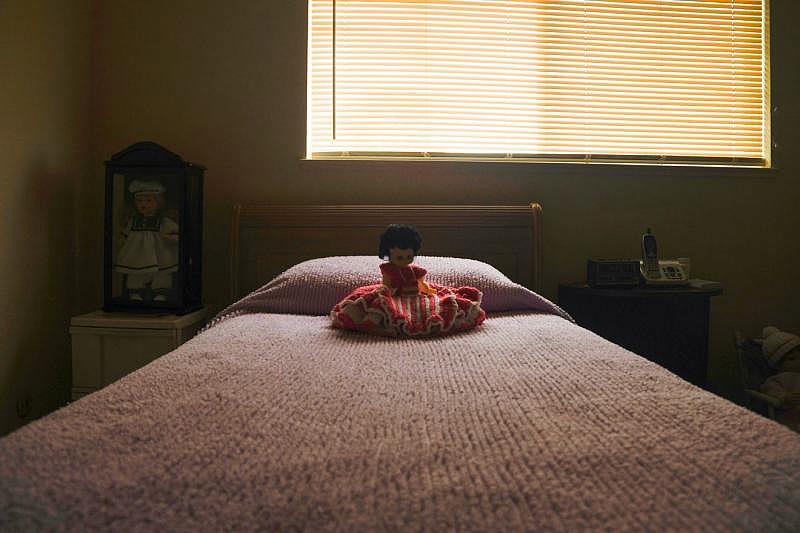Evicted Monterey County renters face greater risk of contracting COVID-19
This story was produced as a project for the 2020 California Fellowship.
Other stories in this series include:
Ag workers exempted from COVID-19 shelter in place mandate, advocates fear for health
Protected in the fields but not at home: Salinas H-2A farmworkers at risk
‘The perfect storm of vulnerability’: Protection in the fields doesn’t follow farmworkers home
Trump plans to halt immigration, California growers aren't thrilled
Monterey County ag workers comprise nearly a quarter of county COVID-19 diagnoses
Sixth person dies from COVID-19, Alisal and North Salinas hardest-hit in county
Monterey County growers face 'unprecedented losses' amid pandemic
Close quarters: Overcrowding fuels spread of COVID-19 among essential and service workers
Do California ag counties hold solutions to Monterey County farmworker housing crisis?
Monterey County advocates, growers urge renewed focus on farmworker housing
Housing bills aim to extend tenant, landlord protections for Californians amid pandemic

A framed portrait of Martinez's sister hangs in the living room. Aug 7, 2020.
Ayrton Ostly/The Californian
After 70 years in Monterey County, 87-year-old Mary Martinez moved in the middle of a pandemic, evicted from her modest one-bedroom, second-floor apartment at 1118 Parkside St. in north Salinas.
According to her former landlord, Martinez was evicted because she allowed a "violent man" to live with her, violating the conditions of her lease. Martinez said the man is her epileptic nephew.
Advocates say that while evictions like Martinez's are rarer during the pandemic, landlords are feeling the financial squeeze. Some have sold rental properties to make up for lack of income. That can leave renters out in the cold when their new landlord raises the rent by hundreds of dollars or requires all renters move out before they take over the building.
'I don't want to leave'
Nearly half the housing units in Monterey County are renter-occupied and of those renters, about half pay 35% or more of their monthly income in rental costs, according to American Community Survey (ACS).
The same data shows people of color tend to be renters rather than homeowners. People ACS data identified as Hispanic, Latino or Mexican –– such as Martinez –– make up the largest body of renters in the county.
Martinez does not deny violating her lease agreement but said her landlord was looking for an excuse to kick her out since March when he bought her building.
She also said she believed her status as a Section 8 recipient made her a target, an assertion her landlord denied.
After spending four years in her apartment off Laurel Drive, Mary Martinez has been forced too move out. Aug 7, 2020. Ayrton Ostly/The Califor
According to Martinez, he soured on her after her epileptic nephew suffered a seizure in the bathroom, leaving emergency crews to break down the locked door. Martinez paid about $70 to replace the door, she said
In June, she received a 90-day notice to evict.
"I don't want to leave," Martinez said through tears during a July interview. Her voice quavered. She sat on her living room couch, her shoulders slumped.
In August, she closed the door to apartment 10 behind her for the last time.
'Keep the housed housed'
At the state level, Assembly Bill 3088, co-authored by California State Senator Anna Caballero (D-Salinas), keeps renters facing hardship due to COVID-19 in their homes.
The legislation, signed by Gov. Gavin Newsom in August, states tenants who have provided qualifying declarations of hardship can't be evicted before Feb. 1, 2021.
Monterey County, like other counties, passed a similar moratorium early in the pandemic, extending it multiple times to keep it alive until the state legislature could find a solution.
Martinez is not the only person to be evicted or lose their housing during the pandemic. The moratoriums dealt with eviction for nonpayment of rent, not of someone in violation of their lease, as Martinez was. Others saw their landlords sell to new owners who raised the rent an untenable amount.
Far fewer people have been evicted during the pandemic than anticipated, said Joel Hernández Laguna, the lead organizer for Center for Community Advocacy's (CCA). But in recent months, CCA received a higher-than-usual number of calls about people being forced out of their homes due to rent increases.
"You have to see the other point of view," said Hernández Laguna, who has worked for CCA for almost nine years. "Some landlords are struggling to make payments on properties they rent out."
He suspects that resulted in higher property turnover than normal. New owners often stipulate in the purchase contract that all tenants must move out upon sale of the property, or raise the rents so much the current tenants can't stay, Hernández Laguna said.
"Landlords aren't able to evict people with the current ordinances so instead are (increasing) the rent," he said. "Which is another way of pushing them out indirectly."
Martinez's landlord told her to leave Friday or she'll be forced out by police. Aug. 7, 2020. Ayrton Ostly/The Californian
Matt Huerta, Director of housing at the Monterey Bay Economic Partnership (MBEP), said housing stakeholders are raising the issue of eviction and housing in MBEP group discussions.
"Our overarching message has been to keep the housed housed," Huerta said. "Unless it's a health and safety problem – in terms of the tenant creating a health and safety problem – everyone should be motivated to prevent a large health and safety problem to prevent evictions that will lead to crowded housing and homelessness."
Phyllis Katz, directing attorney at California Rural Legal Assistance (CRLA) of Monterey County, said while CRLA had not seen any eviction cases during the pandemic, an eviction could lead to the same – or worse – consequences for someone.
"People acquire bad credit by being evicted," Katz said in an email.
That bad credit can follow renters and can result in their wages being garnished to pay off debts or keep them from renting on their own. The cost of applying to apartments can be prohibitive, too.
"It costs $30-$50 for each application for housing," Katz said. "People stay with relatives if they can, or in their car, if they can’t until they find housing."
That can put people at risk, Katz noted.
"Families who go live in crowded conditions with another family are more prone to contracting COVID-19, and suffering illness as a result," he said.
Health experts say this creates a prime environment for the coronavirus to spread throughout a household.
A June analysis by The Californian and CalMatters showed the hardest-hit neighborhoods had three times the rate of overcrowding and twice the rate of poverty as the neighborhoods that suffered the least. The neighborhoods with the most infections are disproportionately populated by people of color.
"People end up in that situation because they don't want to become homeless," Hernández Laguna said. "Families are willing to share an apartment complex or bring someone else into their home to pay the rent. One of the consequences of being evicted is having to overshare a property."
Personal and financial loss
At first glance, you wouldn't know Martinez is in the latter half of her ninth decade.
Before the pandemic, she walked to church almost every day for services. When she lived in Salinas, she'd walk to a nearby grocery store to purchase food, and carried it home herself, two blocks and up a flight of stairs.
Martinez's age puts her at a higher risk of complications from COVID-19, should she contract the virus.
An eviction increases the odds she might encounter the virus, as she is no longer able to safely isolate herself, and moved three times in fewer than two months. Her sisters, who hosted Martinez following her eviction, are also at increased risk. Both women are in their 70s.
Stacked boxes full of belongings fill the cramped bedroom of Martinez's apartment. Aug. 7, 2020. Ayrtron Ostly/The Californian
Martinez eventually moved to Pueblo, Colo. to stay with her younger sister, Esther, 76.
In the midst of all this, Martinez is struggling with the loss of her nephew, Greg Palacios.
Palacios was diagnosed with cancer shortly after his seizure in Martinez's bathroom. He moved into hospice care and died over the summer.
Martinez cried as she talked about his death. She was unable to visit him while he was in care hospice due to pandemic-induced restrictions on visitors.
Martinez is wrestling with financial concerns as well.
She can't afford a new apartment without the six weeks' worth of rent, she told The Californian. She has little in the way of savings – she never married and worked mainly as a babysitter and a housekeeper.
While she hopes to keep her Section 8 status, she doesn't know how moving out of state will impact her.
A doll rests on a bed in the only bedroom of Mary Martinez's Salinas apartment. Aug 7, 2020. Ayrton Ostly/The Californian
Furthermore, Martinez said she did not receive her deposit back when she moved out and was owed two weeks' rent.
When reached by phone, her landlord introduced himself as "Pete." He confirmed he had been Martinez’s landlord, but refused multiple times to give his last name, or say how long he had owned the property.
According to Monterey County Assessor records, 1118 Parkside St., the complex where Martinez used to live, was purchased by Ace Organic in March of 2020, which is headquartered in Salinas. An LLC-12 Statement of Information filed with the Secretary of State shows Peter Quinlan King as the owner of Ace Organic.
King told The Californian he worked in conjunction with the Housing Authority to evict Martinez, informing them on "everything, step by step." He also pointed out that he had multiple Section 8 tenants on the premises.
"Mary had a violent and unauthorized tenant living there, so that was cause for eviction," King said when reached for comment.
According to Monterey attorney David Brown, who handles civil matters between landlords and tenants, if Palacios had been on the lease with Martinez, it likely would have been unlawful to evict them due to his seizure. As Martinez paid for the damage done to the door, Brown said, that might have violated the Americans with Disabilities Act.
"I don't know for sure but...assuming that was the landlord's motivation, yeah, that would probably violate the ADA," Brown said.
King declined to comment further on Martinez's eviction, or if he planned to return her deposit.
'Seek help'
Although Martinez reached out to the Housing Authority for help and spoke regularly with her caseworker, she found herself confused as to whether she truly had to move out, or if her eviction notice was just a warning.
She moved out in August but still had doubts at the time of her departure.
Hernández Laguna urged people facing eviction or unanticipated rent increases to reach out to his organization or CRLA for help.
Martinez's landlord told her to leave Friday or she'll be forced out by police. Aug. 7, 2020. Ayrton Ostly/The Californian
"Seek help," he said. "There are protections out there for families."
In Pueblo, Martinez found a new home with her sister Esther, though she doesn't like the cold that's begun to settle in for the Colorado winter.
Esther says she hopes Martinez will stay with her. Pueblo had a low rate of COVID-19 compared to the rest of Colorado but in recent weeks has seen cases rise. Still, Esther said she feels she and Mary are safe from the virus there.
"I think Mary's going to stay here," said Esther. "We'll go to California to visit."
Kate Cimini is a journalist for The Californian covering ag, housing and health. She reported this story with support from the California Fellowship through the USC Annenberg Center for Health Journalism. Engagement editor Danielle Fox contributed engagement support to this story. Share your story at (831) 776-5137 or email kcimini@thecalifornian.com.Subscribe to support local journalism.
[This story was originally published by The Californian.]

